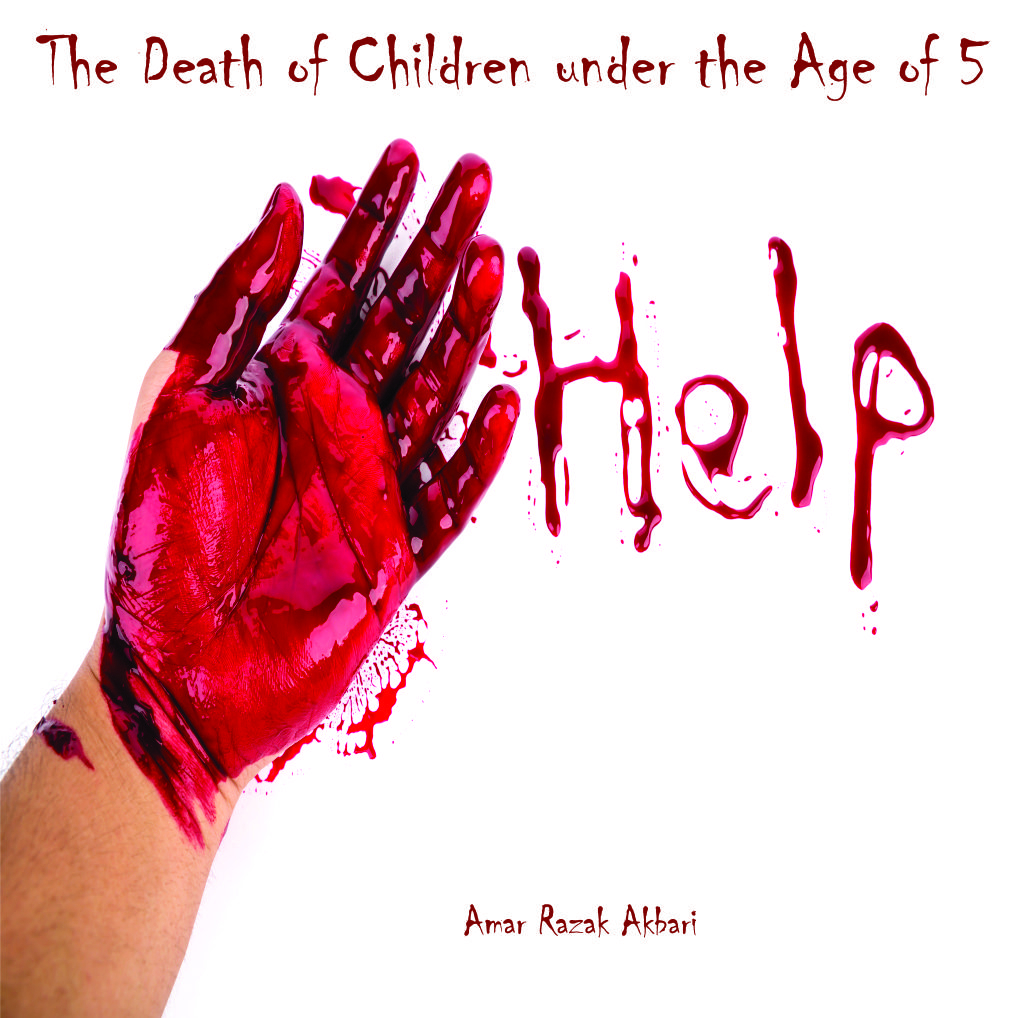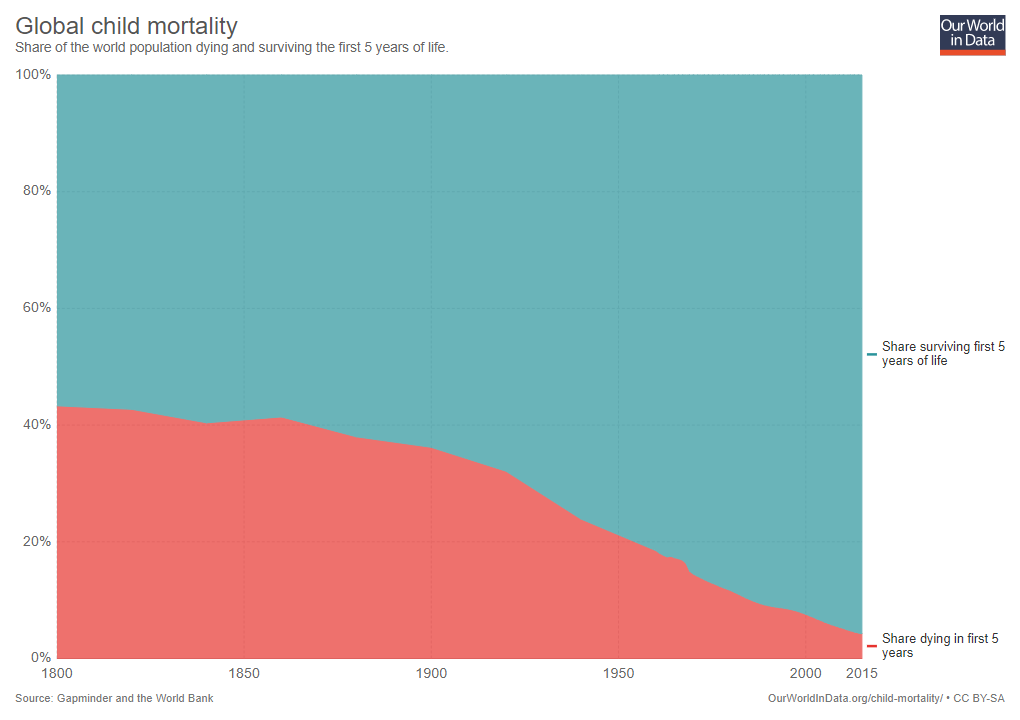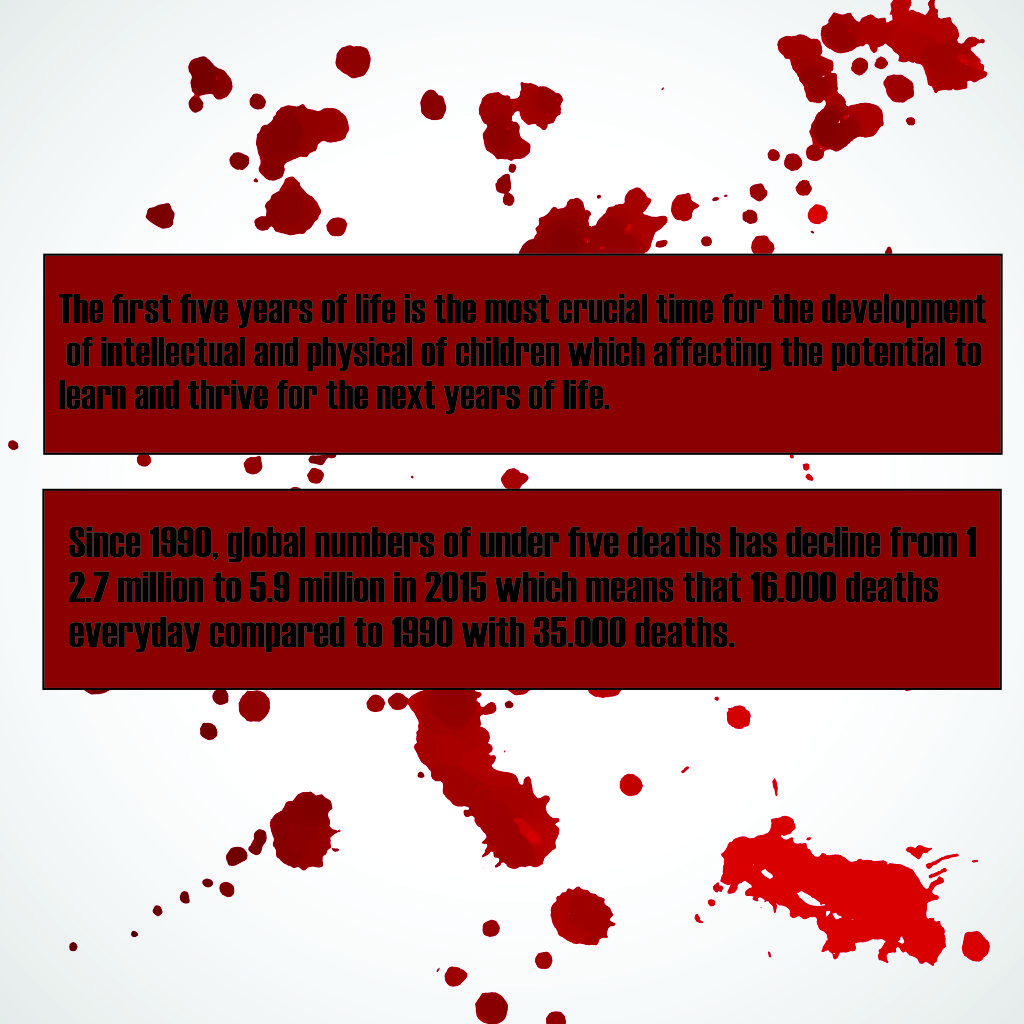The Death of Children under the Age of 5
By: Amar Razak Akbari

The first five years of life is the most crucial time for the development of intellectual and physical of children which affecting the potential to learn and thrive for the next years of life. According to the WHO (2016), 45% of child deaths under the age of five occurred in neonatal period (the first 28 days of life). Thus, safe childbirth and effective neonatal care are important to avoid these deaths. The death of children under age of five is called child mortality which is a key indicator for many aspects such as child health and well-being, nutrition, the implementation of child survival intervention, and more broadly to the social and economic development (United Nation Children’s Fund, 2015). Therefore, due to the great importance of the first five years of life, child mortality became the number four target in Millennium Development Goals which was initiated by United Nation in 2000 Millennium Summit, attended by world leaders committing their nations to a global partnership to achieve eight goals of MDGs by 2015.
Since 1990, global numbers of under five deaths has decline from 12.7 million to 5.9 million in 2015 which means that 16.000 deaths everyday compared to 1990 with 35.000 deaths. Globally, child mortality rate has dropped 53% since 1990, from 91 deaths per 1.000 live births to 43 in 2015 (WHO, 2016). Despite that achievement, at what age babies are most at risk in under 5 deaths? According to the World Health Organization (2016), newborn babies are the most at risk in child mortality. Newborn babies and mother should receive follow up care to prevent and treat illness immediately in the 48 hours after birth because that period is the most crucial time for newborn survival. For more facts, within the first month of life, 2.7 million babies die every year and up to half of those deaths occur in the first 24 hours of life, then 75% occur in the first week (WHO, 2016).
As stated before that newborn babies are the most at risk in under 5 deaths, a question emerge of what causing the deaths? Preventable and treatable diseases through simple, and affordable intervention are the causing more than half of under 5 deaths (WHO, 2016). From the table 1 below, there are two main causes of child mortality deaths which are pneumonia, or other acute respiratory infections, and childhood diarrhea. Each of those cause of deaths has their own risk factors, prevention, and treatment. For example, the childhood diarrhea could be prevented with exclusive breastfeeding, safe water and food, adequate sanitation and hygiene, adequate nutrition, and vaccination. Those kind of preventions are affordable and convenient to achieve, but the case will be different with the Sub-Saharan countries which will be discuss later in this article.
Table 1; Leading causes of death in post-neonatal children

Source: World Health Organization, 2016
Year 2015 is marked as the end of Millennium Development Goals with child mortality as the number 4 target to achieve, substantial progress has been made towards achieving that goal. As stated before that child mortality rate has dropped 53% from 1990, however the reduction rate was insufficient to reach the main target of MDGs which is reducing two-thirds of 1990 mortality levels by year 2015. Therefore, Sustainable Development Goals was initiated by United Nation as a continuation of Millennium Development Goals. Child mortality itself contained in SDGs goal number 3 target 3.2 which to end preventable deaths of newborns and under-5 children by 2030. There are several global initiatives to ensure in achieving under-5 mortality of 25 or fewer death per 1000 live births by 2030.
Let’s go back to hundreds years ago and look the child mortality condition globally. According to the figure below from Our World in Data (2016) with data collected from Gapminder and World Bank, in 1800 the share of child mortality accounted for 43% which is almost the half of the child around the world who died before the age of 5. Throughout the years, it continually decreasing and started from around year of 1900, a very rapid decline occurred resulting 4.3% share of child mortality in 2015.
Figure 1; Global child mortality

Source: Our World in Data, 2016
The world progress in reducing child mortality turn out to be good, the rapid decline from 1900 was astonishing. Now, move to child mortality perspective from countries. Figure 2 below showing world map with number of children per 1.000 live births who die before reaching the age of 5. According to the figure, every developed countries has under 20 children per 1.000 live births of child mortality, marked with cream-colored on the map. While, countries marked with almost-red-colored is developing country such as Indonesia, Sub-Saharan Africa countries, India, and some Latin America countries. Even though child mortality has reached 4.3% share with children that survived first 5 years of life globally in 2015, disparities among the developing countries still occurred. For example, in Sub-Saharan countries such as Angola, Nigeria, Somalia, and Chad, the number of child mortality reached 100 to 200 children per 1.000 live births that died before the age of 5.
Figure 2; Child Mortality World Map

Source: Our World in Data, 2016
A study conducted by William Eastery (2007) from Global Economy and Development stated that MDGs target number 4 about reducing child mortality two-thirds than 1990 is likely difficult to achieve or rather unfair in Sub-Saharan Africa. In 1990, Sub-Saharan is the highest region with child mortality, even until 2015 still the highest region. There are many aspects contributing to why child mortality in Sub-Sahara Africa still high, Das, Hammer, and Leonard (2008) stated that the quality of health services in many developing countries is often poor, and the competence of doctors in those region is low. For example, in Tanzania, only 24% essential checklist when the doctors face patient with malaria, and only 38% when patient is a child with diarrhea (Leonard & Masatu, 2007), and the implementation of pregnancy and birth cares are the main reason for South’s Africa lack of progress towards MDGs. A recent survey by Pattionson et al. (2007) found that even though more than 90% of South African women complete at least antenatal visit, only about 11% received the full set of interventions required.
To summarize, Millennium Development Goals (MDGs) ended in 2015 and child mortality as the target number four experiencing a remarkable progress by reducing it to 43 deaths per 1.000 live births in 2015. However, the progress is insufficient to achieve the MDGs child mortality target which is to reduce it by two-third from 1990 in 2015. For more details, take a look at figure 3 below, there are some regions that did not meet the target, such as Sub-Saharan Africa, Southern Asia, Oceania, and else. Globally, with 43 deaths per 1.000 live births it is insufficient to achieve the goal although it was a remarkable progress, while in developing countries accounted 47 deaths per 1.000 live births.
Figure 3; Child Mortality by Region

Source; United Nations, 2015
Sustainable Development Goals emerge as the continuation of MDGs with child mortality goals of 25 or fewer deaths per 1.000 live births by 2030. While, the goal itself is quite optimistic, some researchers stated that the global goals of reducing child mortality is unfair to Sub-Saharan Africa region, despite the countries condition that has doctors with bad competence, and bad health quality service, Sub-Saharan Africa number of child mortality is too high. Therefore, a special treatment should be done in Sub-Saharan Africa in order to achieve the SDGs goals which is reducing child mortality to 25 or fewer deaths per 1.000 live births by 2030.

References List
Roser, Max. 2016. Our World in Data; Child Mortality. Institute for New Economic Thinking The Oxford Martin School.
Easterly, William. 2007. How the Millennium Development Goals are Unfair to Africa. Brookings Global Economy Development.
Lange, Simon. 2016. How the New International Goal for Child Mortality is Unfair to Sub-Saharan Africa (Again). University of Gottingen, Germany.
United Nations, 2015. Level & Trends in Child Mortality Report 2015. The United Nations Children’s Fund.
World Health Organization. 2016. Children: Reducing mortality fact sheet. World Health Organization.